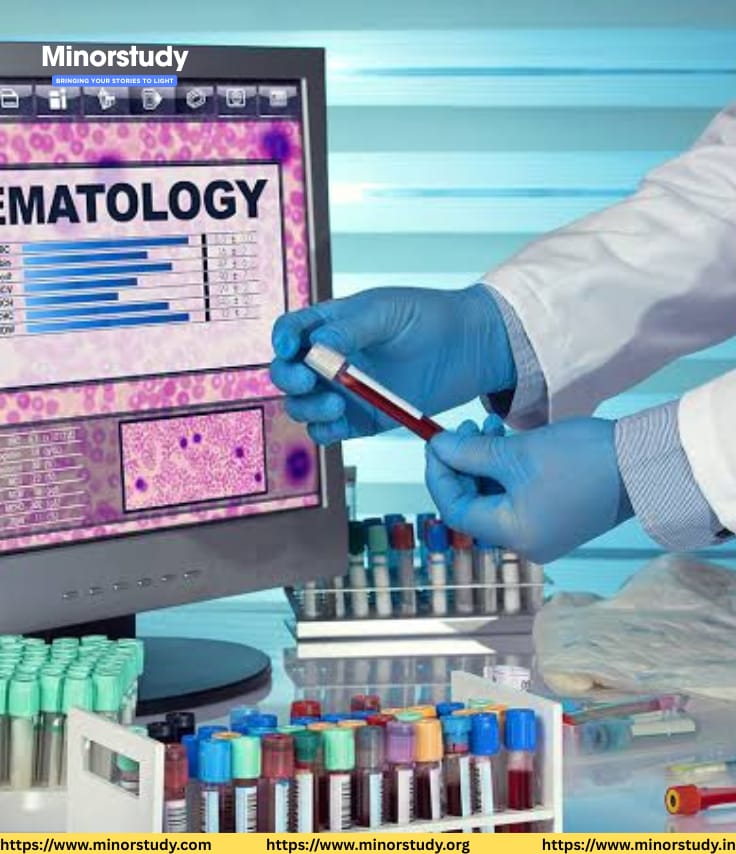🩸 Hematology: 9 Remarkable Facts That Prove It’s the Lifeline of Modern Medicine
🧬 Introduction: Why Hematology Deserves More Recognition
Hematology: Every second, our blood flows silently, carrying oxygen, nutrients, and immunity to every part of the body. Yet, we rarely stop to appreciate the science behind it — Hematology, the branch of medicine that studies blood and its disorders.
Hematologists are the silent saviors who diagnose and treat diseases ranging from anemia to leukemia, ensuring that life continues to flow in every heartbeat.
Let’s explore the evolution, purpose, and power of hematology and understand why this branch is nothing short of a medical miracle.
📜 History of Hematology
🏺 Ancient Times
-
Blood was often viewed mystically; ancient Egyptians and Greeks believed it held spiritual and life-giving powers.
-
Hippocrates, the father of medicine, believed in the Four Humors theory, which included blood as a core fluid.
🏛 Middle Ages – Renaissance
-
Bloodletting was a common treatment, though based on little scientific understanding.
-
The concept of circulation came much later.
🧠 Breakthrough in Circulation – 1600s
-
In 1628, William Harvey described the circulatory system for the first time, revolutionizing medicine.
🔬 Hematology as a Discipline – 19th to 20th Century
-
Morphology of blood cells was studied under microscopes.
-
Discovery of white blood cells (WBCs) and platelets transformed disease diagnosis.
-
In the 20th century, blood typing, transfusions, and bone marrow transplantation became life-saving therapies.
📅 Timeline of Hematology Milestones
| Year | Milestone |
|---|---|
| 1628 | William Harvey publishes circulatory system theory |
| 1770s | First use of microscope to study blood cells |
| 1901 | Karl Landsteiner discovers blood groups (ABO) |
| 1920s | Introduction of blood transfusions in medicine |
| 1940s | Chemotherapy begins for leukemia |
| 1968 | First successful bone marrow transplant |
| 1980s | HIV & blood safety protocols introduced |
| 2000s | Gene therapy trials for blood diseases |
| 2020s | CRISPR used in treating sickle cell anemia |
🩺 What is Hematology?
Hematology is the study, diagnosis, treatment, and prevention of blood-related diseases. It includes analysis of:
-
Red Blood Cells (RBCs)
-
White Blood Cells (WBCs)
-
Platelets
-
Hemoglobin
-
Bone marrow
-
Lymph nodes
-
Spleen
-
Clotting proteins
🤯 9 Remarkable Facts About Hematology
-
Blood Has 4–6 Liters in Adults: And just a 10–15% drop can be fatal — hematology ensures proper management during surgery or trauma.
-
Over 7,000 Known Blood Disorders: Including leukemia, lymphoma, anemia, hemophilia, and thalassemia.
-
Bone Marrow is a Blood Factory: Produces over 500 billion cells daily — hematologists monitor its health to prevent cancers.
-
Blood Transfusions Save 4.5 Million Lives Each Year: Thanks to breakthroughs in hematology.
-
Hematologists Are Disease Detectives: A simple blood smear can reveal infections, cancers, autoimmune disorders, and even nutritional deficiencies.
-
Hematology is Key in Cancer Treatment: Nearly all blood cancers and their remissions are monitored via hematological techniques.
-
Platelet Therapy Helps Heal: Especially in chronic wounds and orthopedic surgeries.
-
Clotting Disorders Are Silent Killers: Hematologists manage deadly conditions like deep vein thrombosis (DVT) and pulmonary embolism.
-
Blood is a Mirror of Health: Almost every systemic disease — from diabetes to HIV — leaves a clue in the blood.
❓ FAQs About Hematology
Q1. What is a hematologist?
A hematologist is a doctor specialized in diagnosing and treating diseases of the blood, bone marrow, and lymphatic system.
Q2. What diseases does hematology cover?
-
Anemia
-
Leukemia
-
Lymphoma
-
Myeloma
-
Hemophilia
-
Thalassemia
-
Clotting disorders
-
Sickle cell anemia
Q3. How is hematology different from oncology?
Hematology focuses on blood and bone marrow disorders, while oncology deals with cancers. However, hemato-oncology is a specialty for blood cancers.
Q4. Is a blood test always required?
Yes, blood tests are the primary tool for hematological analysis. They reveal:
-
Cell counts
-
Blood chemistry
-
Clotting ability
-
Infection markers
Q5. What treatments do hematologists offer?
-
Blood transfusions
-
Chemotherapy
-
Bone marrow transplants
-
Iron therapies
-
Anticoagulants (for clotting disorders)
❤️ Significance in Daily Life
🧑⚕️ For Patients
-
Routine tests like CBC (Complete Blood Count) can diagnose serious illnesses early.
-
Hematology helps anemia sufferers regain energy, and cancer patients survive.
👨👩👧👦 For Families
-
Genetic blood disorders (like thalassemia) require family screening.
-
Children with hemophilia are monitored by pediatric hematologists to live normal lives.
🏥 For Hospitals
-
Surgeons rely on hematologists to manage bleeding during operations.
-
ICUs depend on them for transfusion protocols.
🧬 For Scientific Advancement
-
Innovations like gene editing, mRNA technology, and stem cell therapy begin in hematology labs.
🌏 Societal Importance of Hematology
🧠 1. Public Health Screening
Mass screenings detect anemia in pregnant women, thalassemia in infants, and blood infections early, reducing mortality.
🧬 2. Breakthroughs in Rare Diseases
CRISPR has now reversed sickle cell disease in some patients — a hematological milestone.
👥 3. Blood Donation and Management
Hematology drives safe blood banking, typing, and transfusion safety protocols worldwide.
🧘 4. Enhancing Quality of Life
Proper diagnosis and treatment of blood conditions restore energy, immunity, and functionality.
⚖️ 5. Reducing Healthcare Costs
Early detection of blood disorders through hematology saves billions by avoiding late-stage treatments.
🎉 Wishing Messages for Hematologists and Hematology Awareness
Sample Messages:
-
🩸 “To the unsung heroes who keep our blood flowing right — Happy Hematology Appreciation Day!”
-
🧬 “May your work continue to bring health and hope to countless lives. Thank you, hematologists!”
-
🧠 “From platelets to plasma, your knowledge saves lives every day.”
Best Days to Celebrate:
-
World Hemophilia Day – April 17
-
World Blood Donor Day – June 14
-
National Bone Marrow Awareness Month – November
📌 Important Points Summary
✅ Hematology is the study of blood and related diseases
✅ It dates back to ancient civilizations and revolutionized after the discovery of blood groups
✅ Hematologists treat anemia, leukemia, clotting disorders, thalassemia, and more
✅ It plays a key role in cancer treatment, diagnostics, and gene therapy
✅ Blood is a mirror of systemic health and essential for diagnosing many non-blood diseases
✅ Regular hematological checkups can save lives and detect diseases early
🧠 Final Words: Hematology Is More Than Just Blood — It’s Life Itself
We often thank cardiologists for saving hearts and neurologists for repairing brains. But hematologists work quietly, often behind microscopes, reading the language of life — blood.
They are detectives, life-savers, researchers, and hope-givers—treating diseases at the very root of our existence.
So the next time you get a blood test, or someone recovers from leukemia, remember—that’s hematology at work.
“In every drop of blood lies a story of life, and hematologists are the ones who read it.”







